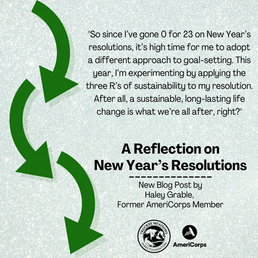A Day in the Shoes of a Wetland Technician
By : Nico Dillman
Vegetation Surveys at Rosewood NatureStudy Area
Today, I arrived at the Rosewood Nature Study Area at 8 AM, ready for a day of vegetation surveys. Our task? Surveying 40 of the 255 acres, focusing on plant coverage. This involved measuring the percentage of invasive species, native plants, bare ground, and unknown vegetation. These surveys help us plan which areas need restoration efforts and which are thriving on their own.

Getting Prepped for the Field
Before heading out, we gathered our supplies: a metal quadrat (for marking survey areas), a GPS to log data points, a clipboard with the vegetation survey forms, a whiteboard and marker for labeling each plot, and of course, waders or muck boots for navigating the wetlands. Everything was loaded into the Toro utility vehicle, and we were off to the first plot.
Surveying the Dry Areas
Our initial plots were in the upland, dry desert-like terrain. Surveying these areas was a breeze. We’d toss the quadrat in a random direction, walk to where it landed, take a picture of the whiteboard marking the acre and survey number, and record our observations. Most of the time, the upland areas were dominated by bare ground, with little to no vegetation. It didn’t take long to finish those plots.

Into the Wetlands: A Challenge Ahead
As the day went on, it was time to survey the wetter areas. This is where the real adventure began. We donned our waders and headed to a new zone, which had plots situated in a riparian habitat. The moment we arrived, I realized this would be a challenge. A wall of tall rushes greeted us, towering like a natural corn maze, thick and thriving in the low, swampy waters.
Our next survey plot was on the other side of this seemingly impenetrable rush forest, across a river that wasn’t even visible yet. There was no way around it—we had to go straight through. The rushes were dense, and every step sank into the mud, threatening to trip us up. With each footfall, I could feel the weight of the mud pulling me down, making me grateful for the ArcGIS maps guiding us to the plot.
Navigating the "Jungle" of Rushes
After fighting our way through the rushes and creating a narrow path, we finally reached the river. But we weren’t there yet. The next challenge was crossing the river, which became deeper and muddier with every step. At one point, the mud was up to my chest, and my feet were sinking into the sandy riverbed. It took some help to pull myself free from the mud, but eventually, we made it across.
Reaching the plot felt like a victory, even though we were surrounded by tall rushes and swampy ground. We threw the quadrat as far as we could, given the limited space, and repeated the process: taking pictures, marking the GPS, and recording vegetation percentages.
The Day’s End and Reflection

We spent the rest of the day surveying various terrains, from dry upland areas to the muddy wetlands, encountering different species of plants thriving in each environment. Around 4:15 PM, we headed back to return our gear, tired but satisfied with the day’s work.
What stuck with me the most was the stark contrast between areas in need of help and those that had figured things out naturally. Some plots were dominated by invasives, clearly in need of restoration. But other areas, like the rush-filled "jungle," were thriving without any intervention. These surveys give us a deeper understanding of the Rosewood Nature Study Area, helping us focus our efforts on areas that need our attention and leaving those that are naturally balanced to continue flourishing.
Today was a reminder of the beauty and complexity of this ecosystem—and how much there is still to learn about the plants that call it home.
About the Author

Nico Dillman
Wetland Restoration Technician
Nico is currently serving as a wetland technician with AmeriCorps in Reno, Nevada, where he is focused on restoring and preserving local wetlands. Originally from Philadelphia, he moved to Reno to pursue his passion for the outdoors and a career in environmental conservation. In his free time, Nico enjoys hiking, running, playing soccer, and swimming, which keeps him connected to the natural landscapes he works to protect.













Click here provide members with discounts on over-the-counter medications, vitamins, and health essentials, promoting better health management and cost-effective wellness solutions. kaiserotcbenefits.com - more details here
Click here help you find recent death notices, providing information about funeral services, memorials, and tributes for loved ones in your area. obituariesnearme.com - more details here
Click here? Many users have had mixed experiences with the platform, so it's important to read reviews and verify deals before booking. istravelurolegit.com - more details here
Great blog Niko!
Amazing!
Ücretsiz Rastgele Cinsel Sohbet Uygulaması.
Sohbet uygulamaları ücretsiz.
Cinsel sohbet Uygulaması.
Görüntülü Sohbet Uygulaması.
Gabile Sohbet Uygulaması.
Canlı Sohbet Uygulaması.
Yetiskin Sohbet Uygulaması.
Cinsel Chat Uygulaması.
Gabile Chat Uygulaması.
Canlı Chat Uygulaması.
Görüntülü Chat Uygulaması.
Sohbet Uygulaması.
Interesting and well written description of the job of a wetland technician. Gave me a clear picture of the nature of the job and it’s purpose.